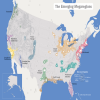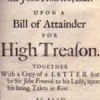Podcast: Play in new window
Wednesday August 29th
Michael Shaw, founder of Freedom Advocates joins me to discuss, stakeholders, regionalism, commies, MAP 21, The New Man (same as the old one) and other insundrie, commie delights being served up this century.
This is an article found on freedom advocates website. The link to it is at the end.
Do We Need Another Entity Telling Us How, Where to Live? by Don Lively
Ask 100 people about “smart growth” and likely 99 will look blank or reply, “Sounds great!” — the desired response of proponents of this regional land use control measure. The following comments reflect concerns of smart growth-savvy citizens from both sides of the Bay — and portray implications every Contra Costa County resident should understand about the county-wide project called “Shaping Our Future-Contra Costa County” (SOF-CCC), generically labeled “smart growth.”
SOF-CCC was initiated by some local officials, asking 19 city councils for 60 cents per resident to fund the $700,000 project. The product was to be a “Vision” and “Compact,” locking each subscribing city into a 20- to 30-year land use-growth plan. The contracts bind cities to SOF-CCC’s, “Vision” of long-term regional land-use planning, housing and transportation, including matters of “social equity” — e.g., where, when, and how to place schools.
The project purports representation of views of 600 or more local residents attending workshops. At these workshops, residents were asked to place colored labels on maps of cities, indicating what sort of land use they would prefer in their communities. If they were unfamiliar with a project, they were guided by a facilitator. However, some people familiar with the process say the facilitators had a desired conclusion before the workshops even began, in essence directing the residents to come to a foregone conclusion in support of the plan.
That isn’t the only debate surrounding Shaping Our Future, as many critics claim the process takes away local control over a city’s future and puts it in the hand of a regional entity — the county — adding one more layer to an already top-heavy regional government.
No matter what your opinion is on Shaping our Future and smart growth, it will help to understand the history.
A broader look at smart growth
“Smart growth” didn’t suddenly emerge locally. Its long roots reflect two key United Nations programs, including follow up action by a Presidential commission and U.S. activist groups.
A 1976 U.N. “Conference on Human Settlements” concluded, “the only way to protect the environment is to control the activities of the people who use it”.
From the 1992 U.N. “Conference on Environment and Development” came a 300-page policy document titled “Agenda 21,” which said, among other things, “Private land ownership is an instrument of accumulation, and therefore contributes to social injustice … public control of land is therefore indispensable.”
Working through 1999, the Sierra Club, Nature Conservancy and National Wiildlife Federation, as a group, participated in President Clinton’s “Council on Sustainable Development.” It created “Belief Statements” proclaiming a need for widespread “collaborative decision processes,” similar to the workshops employed by SOS-CCC. Using this process, U.S. environmental groups worked to establish “visioning councils” and/or “stakeholder councils” in communities around the country to develop plans for “sustainable communities.”
Whatever name used in a particular locale (labeled “Shaping Our Future-CCC”, here), they appear to be “Agenda 21” progeny.
More detailed information about Smart Growth is found at noted demographer Wendell Cox’s Web page, demographia.com.
Local “Smart Growth” Highlights
Residents from Lamorinda, Walnut Creek, Concord and other communities attended “consensus building” sessions — the label-placing workshops. Some of the options presented at the workshops were high-density housing and commercial mixed use within half-mile circles around BART stations (transit villages); urban location redevelopment for “affordable housing;” more mass transit; reducing single-family home ownership from 70 percent ranges to 50 percent levels; and eliminating automobile use — essentially, mandating “social equity goals” under unspecified central regional governmental rulemaking.
One current roadblock to “Vision” acceptance is a lack of “rules of the game” specifics, i.e., what is the “Compact.” For instance, the Board of Supervisors is having disagreements over land use for new housing development in the East County past the Urban Limit Line. Certain West Contra Costa County officials also have concerns.
The Project Manager of SOS-CCC is completing the Final Draft “Vision” and getting 19 cities’ “Compact” endorsements, legally committing them to terms and policies of this 20-year, centrally-directed land use, housing and transportation dictate.
One final key problem remains. Cities know they may exit the agreement early on, but General Plans must match Shaping Our Future’s “Vision,” “Plan” and “Principles of Agreement.” Once city-specific land uses are changed to higher densities, there’s no going back. There is no downzoning to previous use, to reverse mistakes. There is no going home again.
All residents and homeowners must study issues and impacts of SOF-CCC quickly and thoroughly, then advise their city councils accordingly. Voting to participate or not is imminent this month or next.







